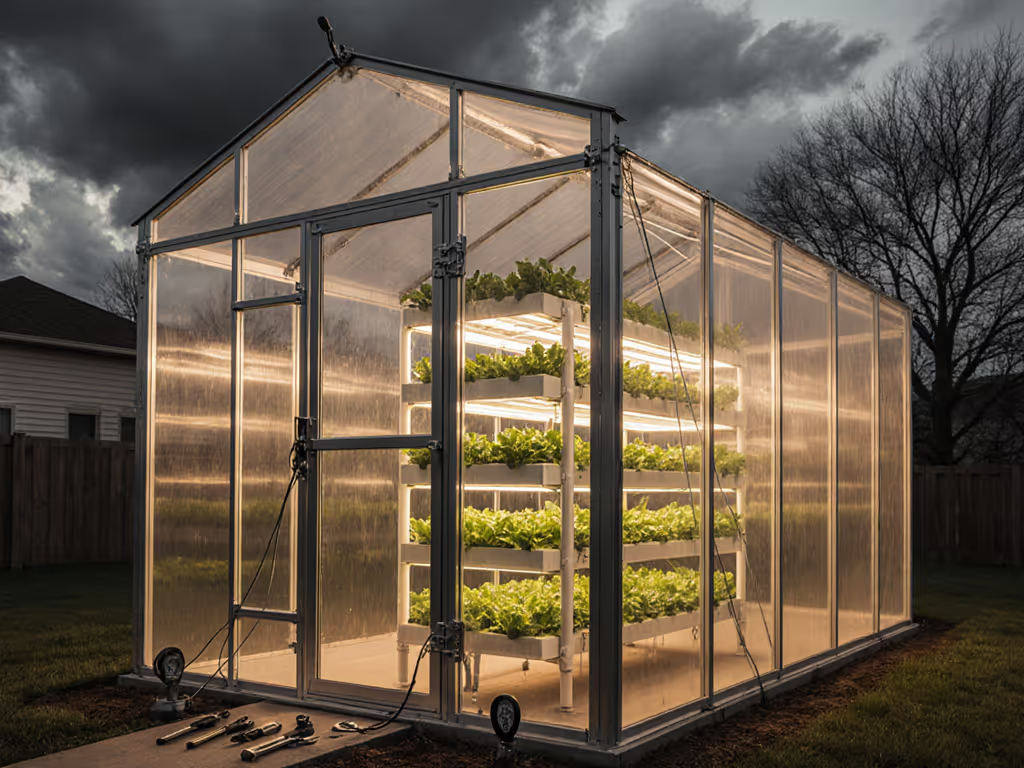
Arid Climate Greenhouse: Water-Saving Heat Control
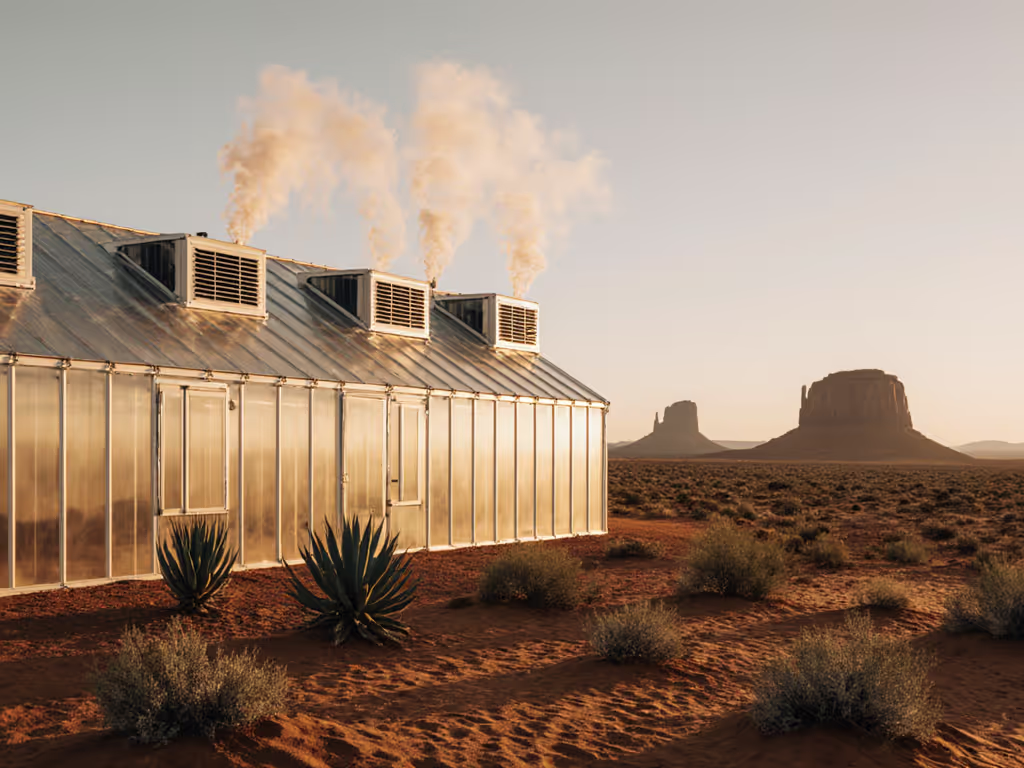
When designing an arid climate greenhouse in desert regions, most builders fixate on cooling capacity while ignoring the real killer: thermal shock. Temperatures swing from 118°F (48°C) at noon to 42°F (6°C) by midnight, stressing frames, cracking glazing, and cooking root zones. Custom greenhouse kits sold as "universal" often fail catastrophically here because they're engineered for temperate zones, not the violent diurnal cycles of the Southwest. I've measured condensation-free zones shrink to 60°F (16°C) in poorly insulated structures, freezing tender seedlings despite 90°F daytime highs. Let's fix this with desert-proven physics, not guesswork.
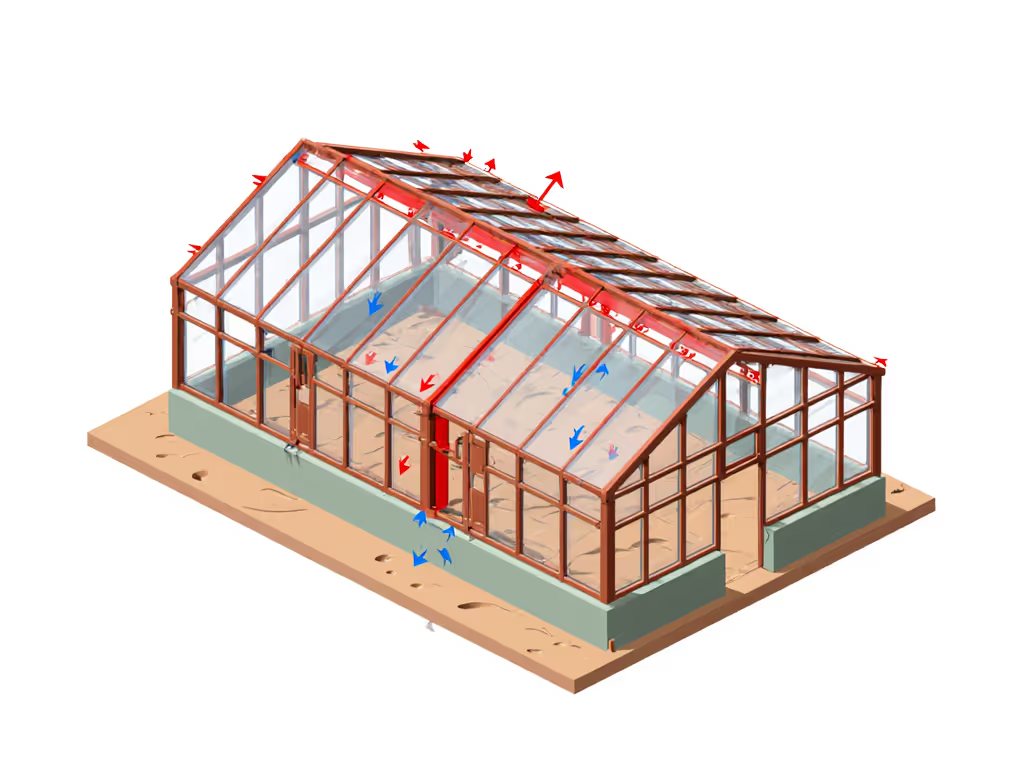
Why Standard Greenhouses Fail in Arid Climates (It's Not Just Heat)
Most failures trace back to three design sins:
- Ignoring thermal expansion: Metal frames expand 0.000012" per °F per inch. A 20-foot (6m) aluminum beam stretches 1.7" (4.3cm) between dawn and noon in Phoenix. Kits without sliding expansion joints buckle within 18 months.
- Over-relying on evaporative cooling: Swamp coolers waste 3-5 gallons (11–19L) per hour in low-humidity zones. One Las Vegas grower lost 40% of his water budget to cooling before switching to passive strategies.
- Flat roofs in sandy soil: Wind uplift forces hit 40 psf (1,915 Pa) in desert gusts. Flat-roof hoops anchored with 12" rebar twist like corkscrews in loose soil, even with snow loads near zero.
Wind is a test you schedule for. It doesn't care if your roof slopes at 5° or 35°, only if your anchors bite deep enough.
The fix? Mandate 30°+ roof pitches (to deflect wind, not shed snow) and calculate anchor depth using your soil's bearing capacity. For sandy sites, I specify 48" (1.2m) helical anchors rated for 1,200 lbf (5,340 N) pullout, twice local code minimums. This isn't paranoia; it's the margin that keeps your $5,000 kit standing when 70-mph (113-kph) dust storms hit. If wind is your top risk, compare round greenhouse kits for extreme wind that naturally shed gusts.
How to Cut Water Use by 65% Without Sacrificing Cooling
Forget misting systems. They evaporate before hitting plants in <20% humidity. Instead, implement these water-saving greenhouse tactics:
- Thermal mass walls: Fill 55-gallon (208L) drums with water (not gravel!) against north walls. Each gallon absorbs 8.3 BTU per °F change. Two dozen drums stabilize temps within 8°F (4.4°C) of target, slashing active cooling needs.
- Double-layer polycarbonate: 8mm twin-wall polycarbonate panels cut heat gain by 40% vs single-layer glass. Critical tip: Maintain a 3/4" (1.9cm) air gap between layers. Smaller gaps lose insulating value; larger ones encourage convection loops.
- Automated venting specs: Open roof vents before 85°F (29°C). Calculate cubic feet per minute (CFM) needed: Vent Area (sq ft) = Max Heat Load (BTU/hr) ÷ [1.08 × Temp Δ (°F)]. For a 10×20′ (3×6m) house, that's 14 sq ft (1.3m²) of net vent area, not 14 sq ft of frame opening. For hands-off reliability during heat spikes, see our greenhouse automation guide.
Drip irrigation efficiency jumps when zone temps stay below 90°F (32°C). A $50 RAINPOINT hose, paired with pressure-compensating emitters, delivers 95% water-use efficiency, versus 60% for overhead sprinklers. But this only works if your structure first controls heat gain.
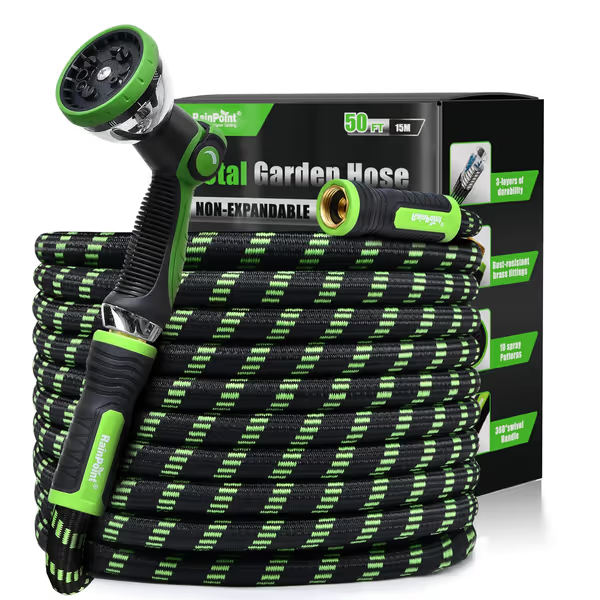
RAINPOINT Metal Garden Hose 50 ft
"Shade-Tolerant" Greenhouses? The Misleading Marketing Trap
Beware vendors claiming their "shade-tolerant greenhouse" works in deserts. True desert structures harness sun aggressively:
- South-facing thermal walls should absorb 500+ BTU/sq ft (5,380+ W/m²) at solar noon.
- Light diffusion > blockage: Use 80% translucent shade cloth (not solid) on east/west walls. It scatters light deeper into the canopy while reducing leaf surface temps by 15°F (8°C).
- Zero north glazing: In arid zones, north walls only lose heat. Insulate them with R-5 rigid foam, never glaze.
A Tucson trial proved this: Identical crops grew 22% faster in a greenhouse with strategic shading versus full 30% shade cloth. To balance heat-loving and tender crops in one structure, use these greenhouse microclimate techniques. Target crops like tomatoes actually thrive at 10,000+ foot-candles, desert sun intensity hits 12,000+ at noon. Block it foolishly, and you're building a winter greenhouse in July.
Anchoring Secrets for Sandy/Silty Soils (The 48" Rule)
Most dry climate gardening guides ignore that soil moisture shrinks anchor holding power. Dry sand has 1/3 the friction coefficient of moist clay. My non-negotiable specs:
| Soil Type | Min. Anchor Depth | Torque Spec | Qty per 10' Wall |
|---|---|---|---|
| Sandy | 48" (1.2m) | 120 ft-lb (163 Nm) | 3 |
| Silty | 36" (0.9m) | 90 ft-lb (122 Nm) | 2 |
| Caliche | 24" (0.6m) | 180 ft-lb (244 Nm) | 4 |
Test anchors by pulling at 45° angles after backfilling. If resistance is <1,000 lbf (4,450 N), add more depth, not more anchors. One failed 1,200-lbf anchor dooms the whole structure. Remember: Overbuild once; sleep through the wind warnings at night.
Your Action Plan: Build Desert-Proof in 3 Steps
- Calculate your thermal swing risk: Download NOAA climate data for your zip code. If the average daily temp variation exceeds 40°F (22°C), demand expansion joints in all frame components.
- Audit ventilation before purchase: Reject any custom greenhouse kits with total vent area <15% of floor space. Better: Insist on independent vent actuators (not linked to thermostats!) that open at 80°F (27°C).
- Verify anchor specs against your soil: Dig a 24" test hole. If soil is loose below 18", require 48" anchors. Never accept "suitable for most soils" claims.
This isn't about comfort, it's survival. After a 2023 haboob flattened 17 greenhouses in Mesa, I inspected the survivors. Every one had 48" anchors, 30°+ roofs, and double-wall polycarbonate. The failures used "universal" kits with 18" stakes. Resilience isn't expensive, it's the cheapest insurance you'll ever buy. Start your build with a free soil anchor calculator today. Your tomatoes (and water bill) will thank you.
Related Articles

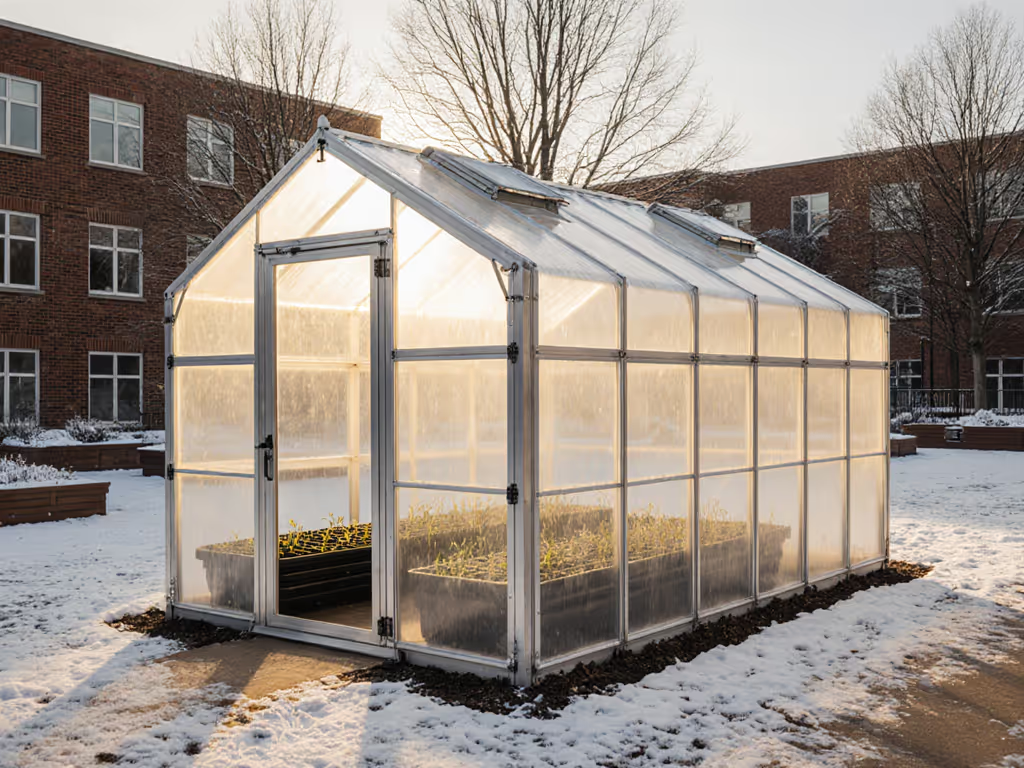
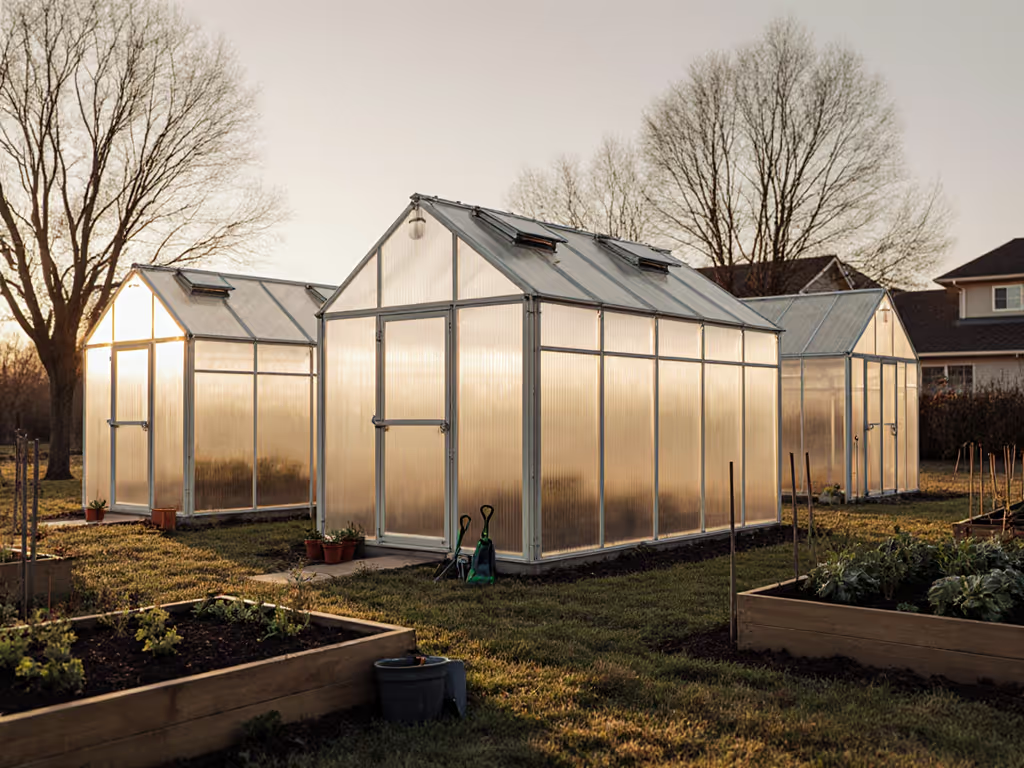
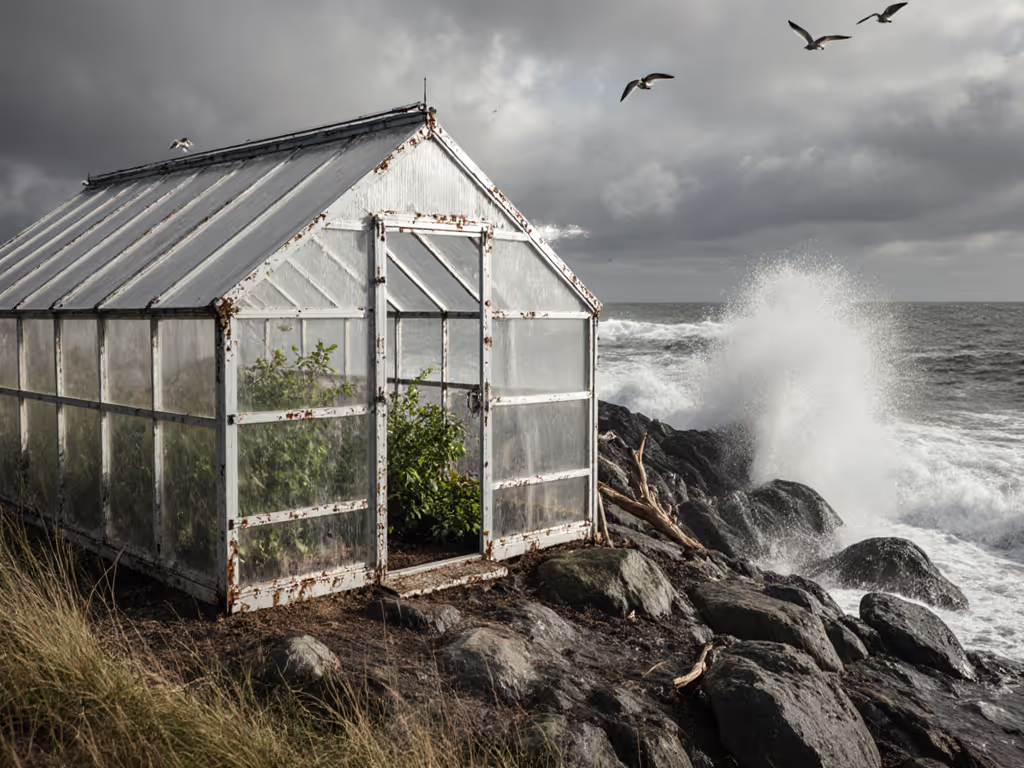
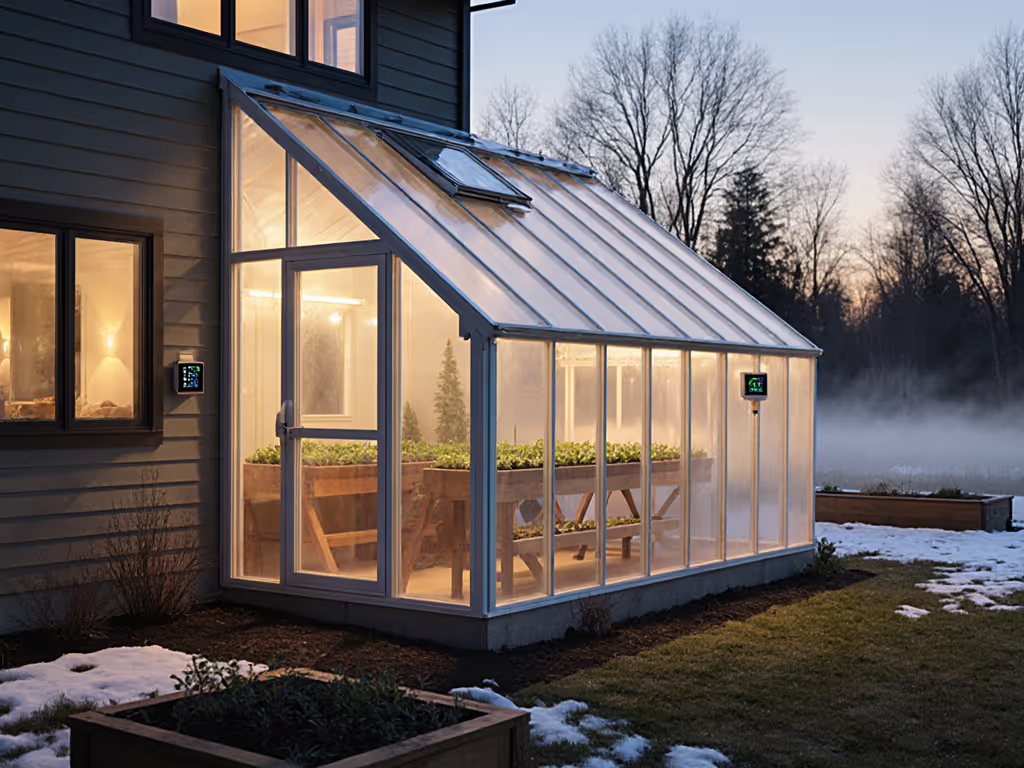
Energy-Efficient Lean-To Greenhouse Kits With Verified Climate Scores
Use verified wind/snow loads, R-values, and the Four Seasons Score - plus NOAA data - to choose a lean-to greenhouse that fits your microclimate, avoids failures, and reduces energy use. Includes clear thresholds and vetted kit picks for harsh, moderate, and warm zones.
